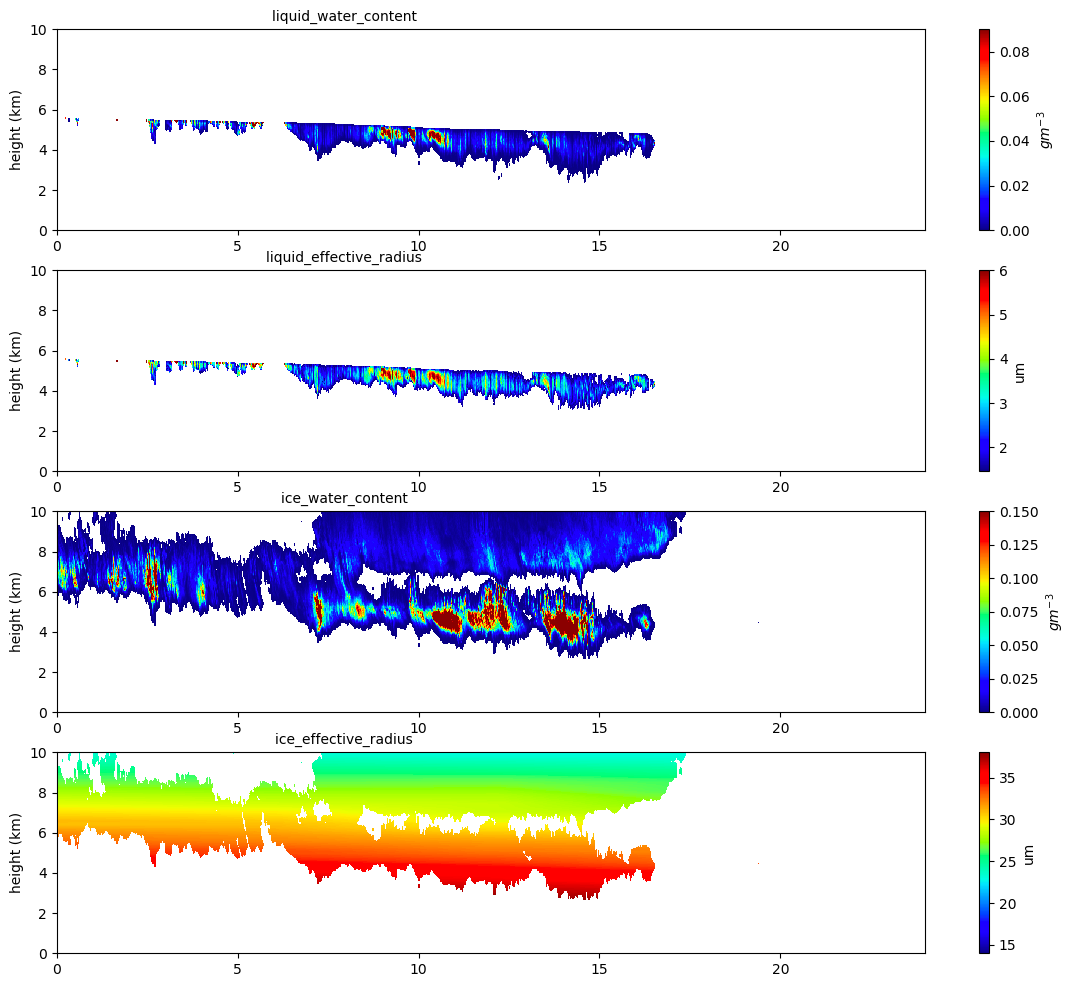Cloud Microphysics VAP Extended at Southern Great Plains
Published: 20 July 2023

New evaluation data are available from a value-added product (VAP) that builds upon the Atmospheric Radiation Measurement (ARM) user facility’s historical Continuous Baseline Microphysical Retrieval (MICROBASE) VAP.
The latest release from the Improved MICROBASE Product with Uncertainties (MICROBASEKAPLUS) covers all of 2021 at ARM’s Southern Great Plains atmospheric observatory, extending the data set an additional year.
MICROBASEKAPLUS provides continuous, height-time-resolution resolution profiles of cloud microphysical properties such as liquid/ice water content and liquid/ice effective radius. The VAP was primarily developed for estimating radiative heating rate profiles, but scientists can use it for diverse applications, including evaluation of model cloud parameterizations, process studies of precipitation formation, and cloud particle phase partitioning.
MICROBASEKAPLUS uses parameterizations identical to those used by MICROBASE for determining the liquid/ice water content and liquid/ice effective radius. However, MICROBASEKAPLUS adds uncertainties to these quantities using a perturbation method first applied through the Atmospheric System Research (ASR) Quantifying Uncertainty in Cloud Retrievals (QUICR) science focus group (Zhao et al. 2014).
To determine the cloud microphysical properties, MICROBASEKAPLUS uses a combination of data from three VAPs: Ka-Band ARM Zenith Radar Active Remote Sensing of CLouds (KAZRARSCL), Interpolated Sonde (INTERPSONDE), and Microwave Radiometer Retrievals (MWRRET).
The MICROBASEKAPLUS product is archived as daily data files. These files have a time resolution of 4 seconds and vertical resolution of 30 meters to 18,010 meters, which are consistent with the KAZRARSCL data resolutions.
Scientists can use the new data now. Ongoing work aims to use MICROBASEKAPLUS within the ARM Operational Ground-Based Retrieval Evaluation for Clouds (OGRE-CLOUDS) framework, evaluating improvements to cloud microphysics retrievals through radiative closure studies and comparing the results to instrument observations. Through this process, the development team anticipates a continuous improvement of the cloud microphysical estimates.
More information about MICROBASEKAPLUS is available on the VAP web page.
During this evaluation period, please send any product-related comments and suggestions to ARM translator Scott Giangrande, scientist Michael Jensen, or VAP developer Meng Wang. Such feedback will assist in improving the product before it moves from evaluation to production.
Users can access the new data from the ARM Data Center. (Go here to create an account to download the data.)
To cite the MICROBASEKAPLUS data, please use doi:10.5439/1768890.
Reference: Zhao C, S Xie, X Chen, MP Jensen, and M Dunn. 2014. “Quantifying uncertainties of cloud microphysical property retrievals with a perturbation method.” Journal of Geophysical Research: Atmospheres, 119(9), https://doi.org/10.1002/2013jd021112
Keep up with the Atmospheric Observer
Updates on ARM news, events, and opportunities delivered to your inbox
ARM User Profile
ARM welcomes users from all institutions and nations. A free ARM user account is needed to access ARM data.


















